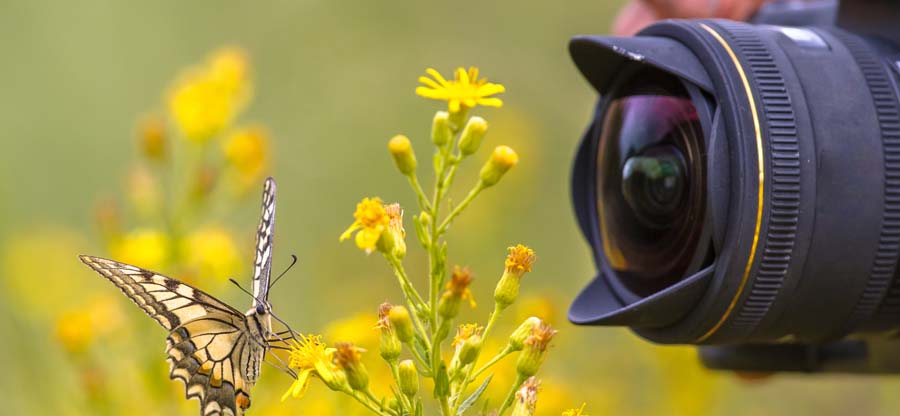Read time: 5 minutes
Clicking pictures is not child’s play. It is all about capturing the real essence of the moment. Professional digital cameras have allowed individuals to take the art of photography seriously and develop it into a full-time career. It is no more about just clicking a button. Digital cameras involve various features and settings, which are a bit technical. It must require a lot of effort to be able to capture the right moment at the right time. But all these efforts would go in vain once your camera starts taking black pictures. This is a rising problem that has been reported by multiple photographers. Before it goes out of hand, it is necessary to resolve this issue.
In this article, we will be going in-depth and discussing certain easy fixes to the issue of digital cameras taking black pictures.
What causes black pictures in digital cameras?
It is suggested by experts to take pictures with ample natural light. The digital cameras have various internal settings which have to be set correctly to avoid taking such dark photos. These are the prime reasons behind your digital camera taking black pictures-
- Dirty camera lens
- Incorrect settings of Aperture, Shutter Speed, and ISO.
- Underexposed photograph
- Problems with the battery of the camera
- An extreme level of corruption in pictures
What are the methods which will fix dark pictures?
Dark pictures can be consequences of various reasons. However, those too can be fixed with the right approaches. Some of these will prove to be helpful as easy fixes to the digital camera taking black pictures-
- Clean the camera lens properly Often dust enters the camera, which can unknowingly affect the quality of the pictures. Before trying any method, remove the lens and clean it thoroughly with a microfiber cloth. In addition, digital cameras now come up with a built-in feature called the Clean Image Sensor. This can be used to vibrate the sensor a few times until all the dirt is cleared away.
- Modify settings of Shutter Speed, Aperture, and ISO
Shutter Speed: As the name rightly suggests, Shutter Speed in a camera refers to the speed at which its shutter closes. A Fast Shutter Speed provides the photographer with a minimum amount of light, while a slower one would allow more light in the camera. It is a tricky element as it is measured in a fraction of seconds. A basic rule is that your Shutter Speed must not be more than your lens focal length.
Aperture: Aperture refers to the hole or opening of the lens through which light enters the camera. It is similar to the Pupil of a human eye. A low Aperture results in less light entering the camera, while a larger one allows more light to enter. It needs to be adjusted in such a manner that enough amount of light is available for the right photos. A low Aperture could lead to fix faded photos.
ISO: ISO simply refers to a camera setting that will either darken or brighten your pictures. If you increase the ISO level, the brightness of the photo will also increase. There is no ideal ISO value since every moment is unique. However, you can keep a higher number while shooting in low light and a lower ISO number when there is inadequate light, but beware of clicking grainy photos.These 3 are the pillars of camera settings. You need to find the right balance, and it will prevent your camera from taking black pictures.
- Take help of Auto Mode If you are a beginner at photography, these multiple settings required to click pictures might turn into an overwhelming experience. However, the Auto Mode in the digital camera provides you with the right assistance. It chooses the appropriate Shutter Speed, Aperture, and ISO for your perfect shot.
- Balanced exposure Exposure refers to the amount light that is able to reach the sensor of the camera. Usually, underexposed pictures become dark or pitch black. It is dependent on your own likes and preferences. In addition, you can alter the exposure of these pictures using the Exposure Compensation feature.
- Utilize Histogram feature Histogram provides all the users with a graphical representation of the brightness of the pictures which has been clicked. The graph is dependent on the subject. It clearly showcases if the picture is underexposed, and further, you can change the settings duly.
- Re-check the battery Sometimes a minor issue with the battery could be behind all this trouble. An easy way to fix it is to remove the battery, clean it thoroughly and insert it again after a while.
- Fix black pictures at the time of editing If you already have many dark pictures that cannot be reshot, fixing them is the only resort. Professional photo editing applications like Photoshop and Lightroom can be put into use to edit dark pictures by increasing their brightness and fixing other elements.
- Repair corrupted photos using this third party software A severely corrupted photo can be difficult to repair. Kernel Photo Repair is professional software that comes to your rescue by repairing all the corrupted RAW photos of your digital camera. Single or multiple pictures of any format and size can be repaired within a few clicks. The quality of the picture remains intact, just like the original one. The software offers good compatibility with all versions of the Windows operating system.
- Visit the camera service center The above mentioned are all the possible easy fixes to the digital camera taking black pictures. If none of them have worked out for you, then it can be concluded that a bigger problem lies within your camera. Before it gets difficult to recover permanently deleted photos, It is advised for you to immediately take your camera to its service center and get it checked professionally.
Conclusion
Black pictures could easily disappoint any photographer and could put a halt to their work. This article discusses all the possible ways to avoid digital cameras taking black pictures. To begin with, make sure the Shutter Speed, Aperture, ISO, and exposure of the camera is set properly. In addition, the problem could be with the lens or battery. A heavily corrupted photo can also turn dark, which can be fixed professionally using the Kernel tool.







